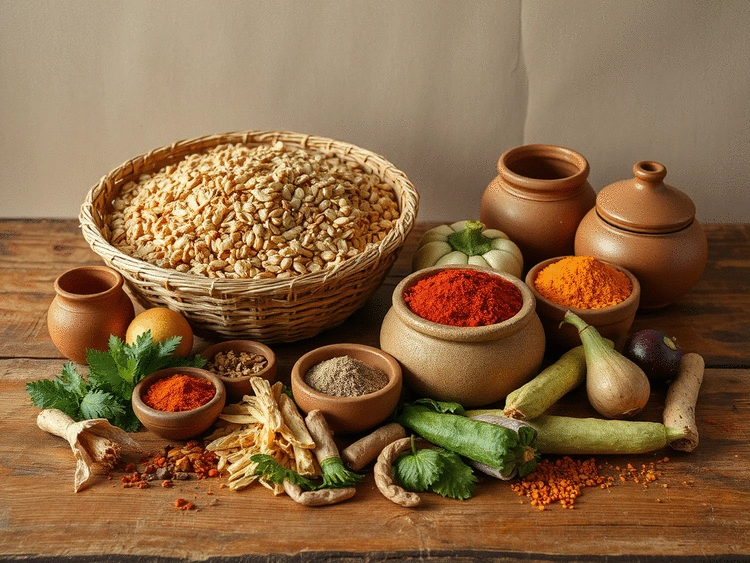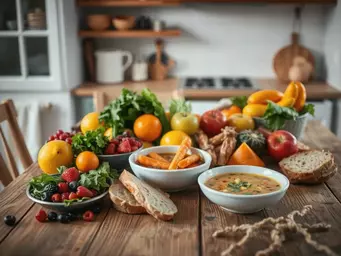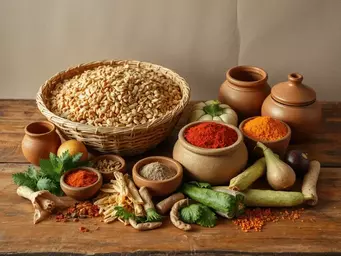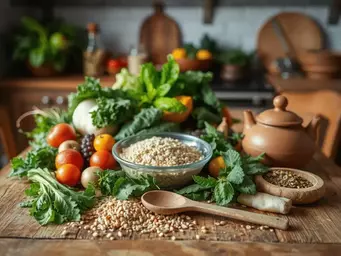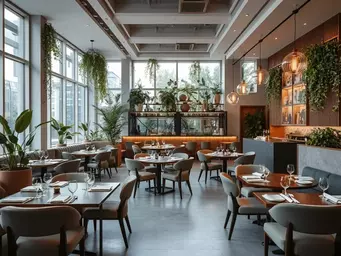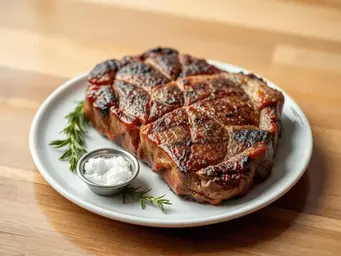Food serves as a powerful connector to our past, revealing not just flavors but the stories that shape our identity. Reflecting on how culinary traditions influence who we are can lead to a richer appreciation for our meals.
What You Will Learn
- Food traditions are key components of cultural identity, revealing deep emotional connections to heritage.
- Culinary practices act as a rich tapestry, encapsulating rituals and values that bind communities together.
- Traditional dishes carry ancestral wisdom, linking generations through shared recipes and memories.
- Indigenous cuisines uniquely reflect local environments and cultural narratives, emphasizing sustainability and community identity.
- Reviving forgotten food traditions enriches present culinary experiences and fosters a sense of belonging.
- Engaging in local food events and sharing recipes can help preserve culinary heritage and strengthen community ties.
- Emphasizing sustainable practices in food can help honor our culinary history while caring for the planet.
Pathways to Preserving Culinary Heritage
Engage, educate, and sustain our food traditions for future generations.
Reviving Culinary Heritage: Key Actions
Preserving traditions is vital for history and enriching our present.
- • Engage with local communities: Attend cultural events and festivals.
- • Share your family's recipes: Document and pass down unique dishes.
- • Support local farmers: Purchase traditional ingredients.
- • Educate yourself and others: Explore books, documentaries, and workshops.
Learning & Engagement Resources
- • Books: Explore history and significance of cuisines.
- • Documentaries: Visual narratives of food traditions.
- • Local Classes: Practical aspects of traditional cooking.
- • Online Courses: Culinary history and techniques.
Preservation through Cooking
- • Cooking Classes: Learn traditional recipes and techniques.
- • Community Cookbooks: Gather and preserve unique recipes.
- • Workshops: Engage with guest chefs specializing in ancestral styles.
Charting a Path for Sustainable Food Practices
Connecting heritage with environmental responsibility.
- • Support heirloom varieties: Preserve genetic diversity.
- • Practice seasonal eating: Connect with the land and its cycles.
- • Advocate for local food systems: Support traditional farmers.
The Importance of Heritage Crops and Heirloom Varieties
These varieties offer more than just flavor; they carry cultural stories.
- • Nutritional Value: Richer in nutrients than modern hybrids.
- • Flavor Profiles: More complex flavors, enhancing enjoyment.
- • Cultural Significance: Connect us to ancestral practices and tastes.
The Role of Food Traditions in Cultural Identity
Food is more than just sustenance; it holds a mirror to our cultural identity. At Born Foodie, we delve into how food traditions shape our sense of self and community. Understanding the deeper connections between cuisine and culture allows us to appreciate not just what we eat but why we eat it. Have you ever paused to think about the stories behind your favorite meals? Each dish we cherish carries the whispers of our ancestors, revealing layers of history and heritage.
Every culture has its unique culinary practices that reflect its values and beliefs. By exploring these practices, we can gain insight into the emotional and historical contexts that define various communities. Through my journey in food anthropology, I’ve found that these culinary traditions form a vital part of our cultural identity, keeping the threads of history alive through every meal shared. For more on how food connects to our past, read about emotional food memories and eating.
Understanding Cultural Heritage Through Culinary Practices
Culinary practices serve as a rich tapestry of our cultural heritage. They encapsulate the rituals, celebrations, and everyday moments that bind us to our roots. For instance, traditional cooking methods often emerge from the need to adapt to local environments and available resources. This is why, at Born Foodie, we emphasize the importance of storytelling in food—each ingredient and technique tells us something profound about the people who create and share these meals.
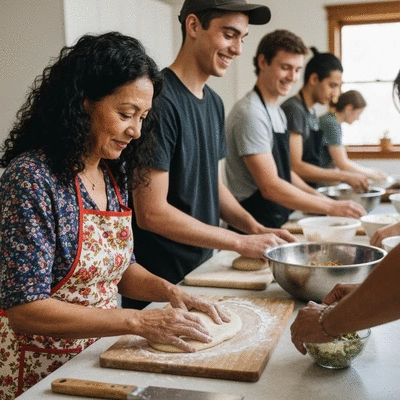
- Food as a celebration of community and family
- Rituals that honor seasons, life events, and spiritual beliefs
- Preservation of culinary techniques passed down through generations
By recognizing these practices, we can honor our ancestors and cultivate a deeper appreciation of our cultural heritage. What traditions do you hold dear in your own culinary journey? Exploring these questions can lead to a richer understanding of our place within the broader narrative of food.
Food as a Medium of Ancestral Wisdom
Food acts as a vessel for ancestral wisdom, bridging the gap between generations. When we prepare traditional dishes, we’re not just following a recipe; we’re participating in a lineage of knowledge that has been passed down through time. At Born Foodie, I often reflect on how cooking the same meals my grandmother made creates an emotional connection to my past. It’s a simple act that resonates deeply, reminding us that food carries memories and teachings from those who came before us.
- The significance of using traditional ingredients
- How recipes evolve while maintaining core values
- The role of food in storytelling and preserving family history
When we embrace these recipes, we’re not just savoring flavors; we’re also sharing in a collective memory that strengthens our cultural fabric. What culinary wisdom have you inherited from your family? Reflecting on these stories can inspire us to keep our food traditions alive.
The Influence of Indigenous Cuisine on Cultural Identity
Indigenous cuisines offer a powerful lens through which we can examine cultural identity. Many of these culinary practices have been shaped by the land, utilizing local ingredients and methods that are sustainable and reflective of the community’s values. At Born Foodie, I find it fascinating how indigenous foods are often intertwined with community identity, spirituality, and a sense of belonging.
- Traditional farming and hunting methods that are closely linked to ecological knowledge
- How indigenous food systems promote biodiversity
- The importance of community gatherings centered around traditional meals
Understanding these influences can help us appreciate the rich cultural tapestries that define indigenous communities. Have you explored the traditional foods of different cultures? Each bite has the potential to connect us to a broader understanding of our shared humanity.
Uncovering Historical Contexts of Forgotten Foods
As we journey through the world of food, it’s essential to uncover the historical contexts that have led to the disappearance of certain traditional dishes. Born Foodie is dedicated to bringing these stories to light, revealing how culinary practices evolve—or vanish—over time. It’s a reminder that every bite we take is steeped in history, culture, and sometimes, loss.
Let’s explore why understanding our culinary past matters so much. By reconnecting with forgotten foods, we can foster a sense of identity and belonging that enriches our dining experiences. What forgotten dishes do you think deserve another chance at the dinner table?
Interactive Poll
What culinary tradition holds the most meaning for you? Share your thoughts below:
Emphasizing the Importance of Reviving Culinary Heritage
At Born Foodie, we believe that reviving culinary heritage is essential not just for preserving history but also for enriching our present experiences with food. The stories behind our meals form a tapestry that connects us to our past and shapes our identities. By emphasizing the importance of these traditions, we open up pathways to explore the intricate relationships between cuisine, culture, and community.
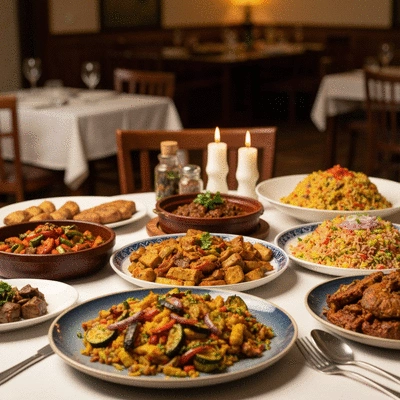
So, how can you participate in preserving forgotten food traditions? Here are some empowering steps you can take:
- Engage with local communities: Attend local cultural events and festivals that celebrate traditional cuisines.
- Share your family's recipes: Document and share the recipes passed down through generations, inviting others to contribute their own.
- Support local farmers and artisans: Purchase ingredients from those who practice traditional agricultural methods.
- Educate yourself and others: Seek out books, documentaries, and workshops that focus on culinary heritage.
Participating in these activities not only celebrates our shared culinary history but also enriches our daily lives with flavors and memories that have stood the test of time. Isn’t it wonderful to think that each meal can be a bridge to our ancestors?
Resources for Further Learning and Engagement
If you're eager to dive deeper into the world of culinary heritage, there are numerous resources available to guide you. From online platforms to local organizations, the opportunities for learning are vast:
- Books: Look for titles that explore the history and significance of various cuisines.
- Documentaries and Films: Visual storytelling can illuminate the rich narratives behind food traditions.
- Local Cooking Classes: Joining a cooking class can immerse you in the practical aspects of traditional cooking.
- Online Courses: Websites often offer courses on culinary history and techniques.
Exploring these resources will enrich your understanding and appreciation of the culinary narratives that shape our identities. Every dish has a story, and it’s our responsibility to keep those stories alive!
Cooking Classes and Community Cookbooks for Cultural Preservation
One of the best ways to engage with forgotten food traditions is through cooking classes and community cookbooks. These initiatives not only teach us how to prepare traditional dishes but also foster a sense of community and shared knowledge. For additional insights into specific approaches, consider exploring reviving regional food traditions today.
- Cooking Classes: Many local chefs offer classes that focus on traditional recipes, allowing participants to learn techniques passed down through generations.
- Community Cookbooks: Collaborating with neighbors to create a community cookbook can be a fantastic way to gather and preserve unique recipes and stories.
- Workshops: Look for workshops that feature guest chefs who specialize in ancestral cooking styles.
By engaging in these activities, we can ensure that the culinary skills and knowledge of our ancestors are not just remembered but actively practiced. Isn’t it amazing to think that every spoonful we prepare connects us to a larger narrative?
Looking Forward: The Future of Cultural Food Heritage
As we look ahead, the future of cultural food heritage hinges on our collective efforts to engage, educate, and preserve. At Born Foodie, we are committed to fostering a community that values culinary traditions and their emotional significance.
Encouraging Community Engagement and Cultural Education
Community engagement is at the heart of preserving our culinary heritage. Here are some ways to encourage this engagement:
- Host potlucks: Invite friends and family to share dishes that reflect their cultural backgrounds.
- Organize food-related events: From tastings to cultural fairs, these events can bring communities together.
- Collaborate with local schools: Integrating culinary heritage into education can inspire the next generation to value their roots.
When we come together to celebrate our diverse food cultures, we create a vibrant tapestry of flavors and stories that enrich our lives.
Charting a Path for Sustainable Food Practices
As we revive forgotten food traditions, it’s crucial to consider sustainable practices that honor both our environment and our heritage. Sustainable agriculture and the preservation of biodiversity are key to this mission. Here are some approaches we can take:
- Support heirloom varieties: Growing and consuming heirloom crops preserves genetic diversity.
- Practice seasonal eating: Aligning our diets with what’s in season fosters a deeper connection with the land.
- Advocate for local food systems: Supporting local farmers ensures that traditional practices are preserved.
By embracing sustainable food practices, we can revitalize our culinary heritage while ensuring a healthier planet for future generations.
The Importance of Heritage Crops and Heirloom Varieties in Modern Agriculture
Heritage crops and heirloom varieties play a vital role in our culinary heritage. These crops not only offer unique flavors but also carry significant cultural stories. Here's why they're important:
- Nutritional Value: Many heirloom varieties are richer in nutrients compared to modern hybrids.
- Flavor Profiles: Heritage crops often have more complex flavors, making meals more enjoyable.
- Cultural Significance: They connect us to our ancestors’ practices and tastes, enriching our culinary identity. For a deeper understanding of how these elements shape our dining experiences, explore the impact of architecture on dining experience.
Incorporating these varieties into our diets isn’t just about taste; it’s about honoring the stories and traditions that have shaped our food heritage.
Frequently Asked Questions (FAQs)
- Q: What role do food traditions play in cultural identity?
- A: Food traditions are key components of cultural identity, revealing deep emotional connections to heritage and shaping our sense of self and community.
- Q: How do culinary practices preserve cultural heritage?
- A: Culinary practices encapsulate rituals, celebrations, and everyday moments, preserving cultural heritage through traditional cooking methods, ingredients, and shared meals.
- Q: How does food transmit ancestral wisdom?
- A: Food acts as a vessel for ancestral wisdom by passing down recipes, techniques, and stories through generations, creating an emotional connection to the past.
- Q: What is the significance of indigenous cuisine?
- A: Indigenous cuisines are deeply intertwined with community identity, spirituality, and sustainability, utilizing local ingredients and methods shaped by the land.
- Q: Why is it important to revive forgotten food traditions?
- A: Reviving forgotten food traditions is essential for preserving history, enriching present culinary experiences, fostering a sense of belonging, and connecting us to our past.
- Q: How can individuals contribute to preserving culinary heritage?
- A: Individuals can contribute by engaging with local communities, sharing family recipes, supporting local farmers, educating themselves and others, and participating in cooking classes or community cookbooks.
- Q: What is the importance of heritage crops and heirloom varieties?
- A: Heritage crops and heirloom varieties offer superior nutritional value and complex flavor profiles while carrying significant cultural stories and preserving genetic diversity.
Recap of Key Points
Here is a quick recap of the important points discussed in the article:
- Food traditions play a crucial role in shaping cultural identity and community bonds.
- Culinary practices reflect the emotional and historical contexts of various cultures.
- Food serves as a vessel for ancestral wisdom, connecting generations through recipes and stories.
- Indigenous cuisines embody sustainable practices that promote biodiversity and community identity.
- Reviving forgotten food traditions enriches our present experiences and fosters a sense of belonging.
- Engaging with local communities and supporting traditional practices helps preserve cultural heritage.
- Heritage crops and heirloom varieties enhance our culinary identity and provide unique flavors.
